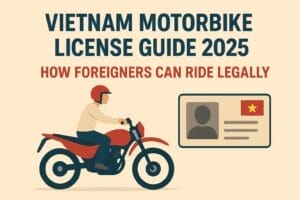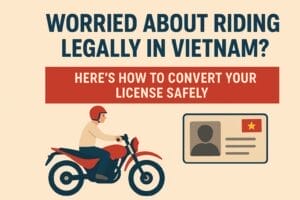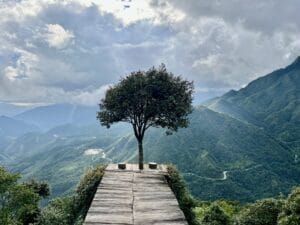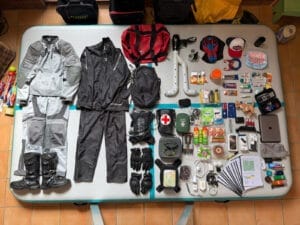Northwest Vietnam motorbike tour to Mai Chau, Ta Xua, Ngoc Chien, Sapa, & Thac Ba | Woods Family
Vietnam, with its stunning landscapes, rich culture, and diverse climate, is a paradise for motorcycle enthusiasts. Whether you are seeking the thrill of riding through winding mountain roads, exploring vibrant cities, or cruising along scenic coastal routes, Vietnam motorcycle tours offer a unique way to experience the country’s beauty. However, choosing the best time for Vietnam motorcycle tours is crucial to ensure you get the most out of your adventure. In this guide, we’ll explore the ideal months for motorcycle trips across different regions of Vietnam, considering weather conditions, seasonal highlights, and safety tips.
Overview of Vietnam’s Climate
Vietnam’s climate varies significantly across its regions, making it essential to plan your motorcycle tour according to the weather patterns of each area. The country is divided into three main regions: Northern Vietnam, Central Vietnam, and Southern Vietnam, each with its own unique weather conditions. Understanding these patterns can help you decide the best time to ride a motorcycle in Vietnam.
General Climate Description
Vietnam experiences a tropical monsoon climate, characterized by high humidity and distinct wet and dry seasons. The climate is influenced by the northeast and southwest monsoons, which bring different weather patterns to various parts of the country. The dry season typically occurs from November to April, while the rainy season spans from May to October. However, these seasons can vary slightly depending on the region.
Impact on Motorcycle Touring
Weather conditions play a significant role in planning a successful Vietnam dirt bike tour. The right weather can enhance your riding experience, while adverse conditions like heavy rain, extreme heat, or fog can pose challenges and affect safety. To make the most of your trip, it’s essential to choose the best months for Vietnam motorbike tours based on the region you plan to explore.
Best Time for Motorcycle Tours in Vietnam by Region
Northern Vietnam
Northern Vietnam, home to destinations like Hanoi, Ha Giang, and Sapa, is known for its stunning mountainous landscapes and cooler climate. The region experiences four distinct seasons: spring, summer, autumn, and winter.
- Best months to visit: March to April and October to November are considered the best time for Vietnam motorcycle tours in the north. During these months, the weather is mild, with temperatures ranging from 15°C to 25°C (59°F to 77°F). The skies are generally clear, making it ideal for exploring scenic mountain roads and experiencing the vibrant spring blossoms or autumn foliage.
- Seasonal Highlights:
- Spring (March to April): The countryside bursts into color with blooming flowers and lush green landscapes. This is a great time to explore the famous Ha Giang Loop or ride through the terraced rice fields of Sapa.
- Autumn (October to November): The weather is cool and pleasant, and the golden terraced fields in regions like Mu Cang Chai create a picturesque backdrop for your ride.
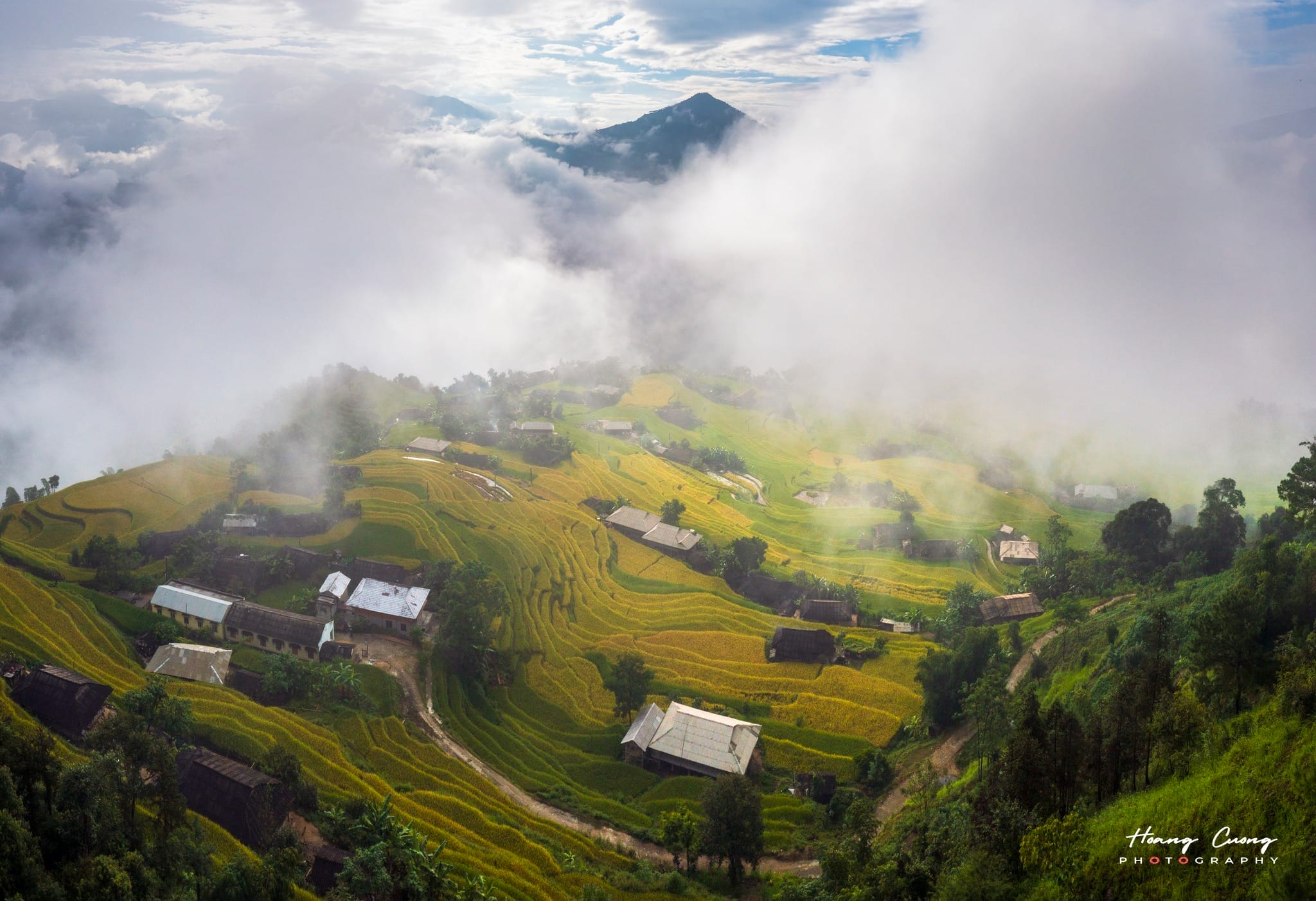
Central Vietnam
Central Vietnam, encompassing cities like Da Nang, Hoi An, and Hue, offers a mix of coastal roads, historical sites, and scenic landscapes. The climate here is influenced by the Truong Son mountain range and the South China Sea.
- Best months to visit: January to April is the ideal time for Vietnam motorbike tours in Central Vietnam. The dry season brings pleasant temperatures and minimal rainfall, perfect for riding along the coast or exploring ancient cities.
- Seasonal Highlights:
- Spring (January to April): Enjoy mild temperatures and blooming flowers in cities like Hue and Hoi An. This is an excellent time to ride along the scenic Hai Van Pass or explore the historic Imperial City of Hue.
- Summer (May to August): While temperatures rise, the clear skies and longer days provide ample opportunities for beach rides and coastal explorations. However, be prepared for the occasional afternoon showers.
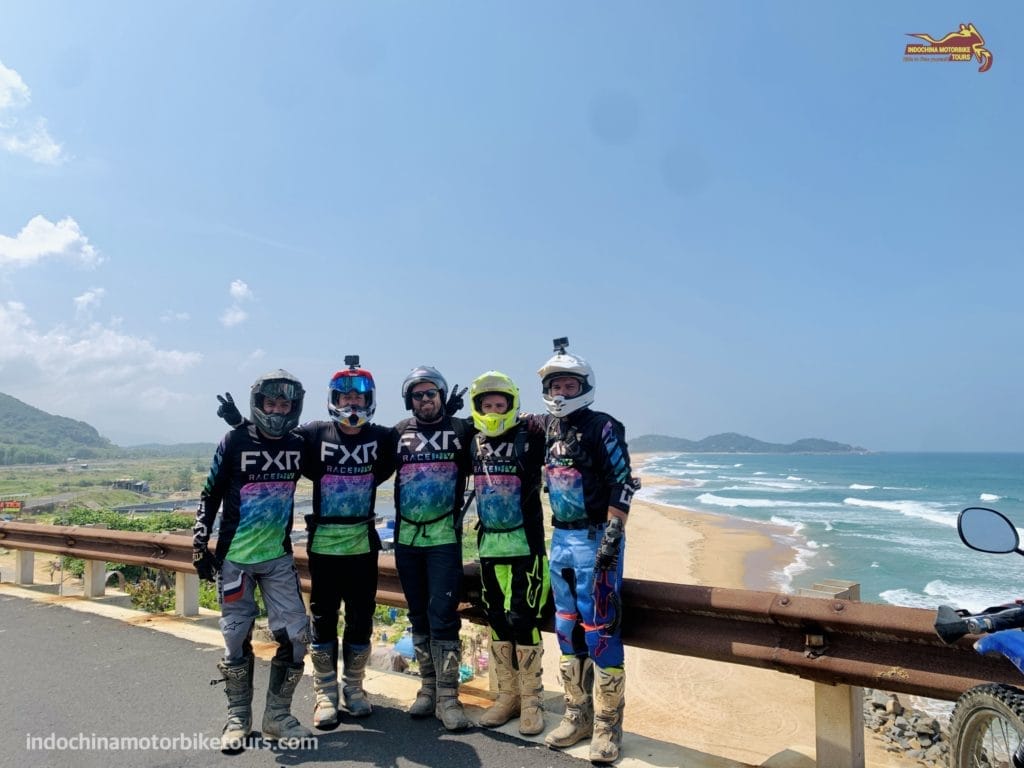
Southern Vietnam
Southern Vietnam, including Ho Chi Minh City and the Mekong Delta, has a more consistent climate, with two main seasons: dry and rainy.
- Best months to visit: December to February is the best time for motorcycle tours in Southern Vietnam. The dry season offers cooler temperatures and less humidity, ideal for exploring the bustling streets of Ho Chi Minh City or the tranquil countryside of the Mekong Delta.
- Seasonal Highlights:
- Dry Season (December to February): The weather is dry and pleasant, making it perfect for long rides through the countryside. Experience the floating markets of the Mekong Delta or the lively streets of Ho Chi Minh City without the discomfort of intense heat.
- Pre-Monsoon (March to April): As the rainy season approaches, temperatures remain moderate, and the landscapes are lush and green. This is a great time for riding through the delta’s waterways and exploring local villages.
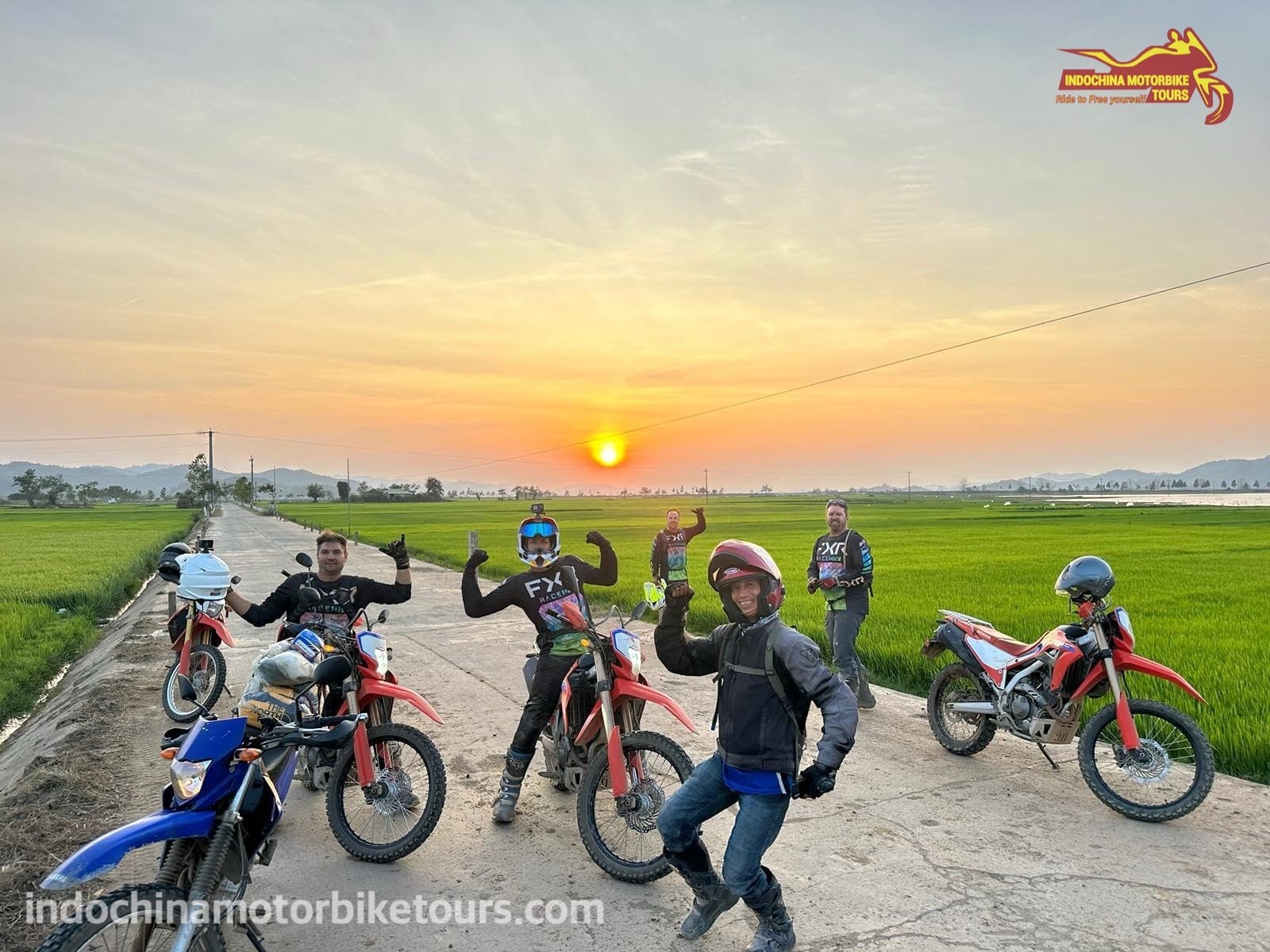
Month-by-Month Guide to Vietnam Motorcycle Tours
To help you plan your Vietnam motorcycle tour more effectively, here’s a month-by-month guide outlining the weather conditions and recommended routes for each season.
January to March
- Weather: Mild and dry in most regions, with cooler temperatures in the north and comfortable warmth in the south.
- Recommended Routes:
- Northern Vietnam: Ha Giang Loop, Sapa to Mu Cang Chai
- Central Vietnam: Hai Van Pass, Hoi An to Hue
- Southern Vietnam: Mekong Delta, Ho Chi Minh City to Vung Tau
April to June
- Weather: Warmer temperatures and increasing humidity, with occasional showers in central and southern regions.
- Recommended Routes:
- Northern Vietnam: Hanoi to Ninh Binh, Mai Chau Valley
- Central Vietnam: Da Nang to Phong Nha, Quy Nhon coastal ride
- Southern Vietnam: Mekong Delta explorations, Dalat highlands
July to September
- Weather: Peak rainy season with heavy rainfall, especially in the north and central regions. Travel can be challenging due to wet and slippery roads.
- Recommended Routes:
- Northern Vietnam: Avoid long-distance tours; consider short day trips.
- Central Vietnam: Coastal routes with less rainfall, such as Nha Trang to Mui Ne.
- Southern Vietnam: Ho Chi Minh City urban rides, explore the Cu Chi Tunnels.
October to December
- Weather: Cooler temperatures and drier conditions, especially in the north. Ideal for exploring mountainous regions.
- Recommended Routes:
- Northern Vietnam: Ha Giang Loop, Cao Bang to Ban Gioc Waterfall
- Central Vietnam: Hoi An to Hue, Phong Nha to Quang Tri
- Southern Vietnam: Mekong Delta countryside rides
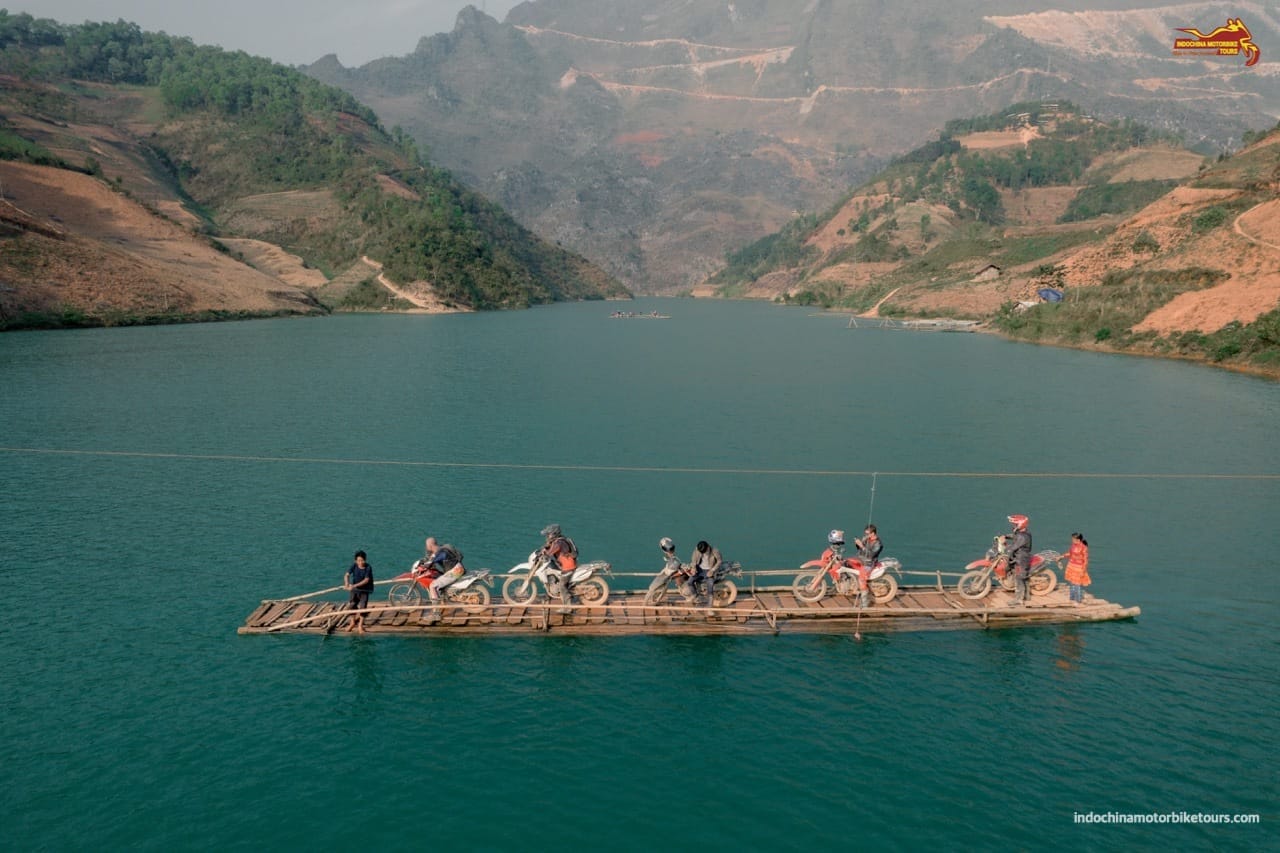
Advantages of Each Season for Motorbike Tours
Each season in Vietnam offers unique experiences for motorcycle enthusiasts. Understanding the advantages of each can help you choose the best time for Vietnam motorcycle tours based on your preferences.
Dry Season (October – April)
- Advantages:
- Clear skies and mild temperatures provide excellent visibility and comfort for long rides.
- Ideal for exploring mountainous regions and scenic coastal routes without the inconvenience of rain.
- Fewer tourists in some areas, allowing for a more intimate experience with local culture and landscapes.
Rainy Season (May – September)
- Advantages:
- Lush green landscapes and vibrant rice terraces create stunning scenery, especially in northern regions.
- Cooler temperatures in some areas make riding more comfortable, despite the rain.
- Off-peak season means fewer crowds and lower prices for accommodations and services.
Key Considerations for Planning Your Vietnam Motorcycle Tour
When planning your Vietnam motorcycle tour, it’s essential to consider various factors to ensure a safe and enjoyable experience. Here are some key considerations to keep in mind:
Weather-Related Considerations
- Check Weather Forecasts: Always check the weather forecast for your planned route before setting out. This can help you avoid unexpected storms or extreme temperatures.
- Pack Accordingly: Depending on the season, pack appropriate gear, such as waterproof clothing for the rainy season or sunscreen and light clothing for the dry season.
Safety Tips
- Safety Gear: Always wear a helmet and protective clothing to minimize injuries in case of an accident. Consider additional gear like gloves, knee pads, and sturdy boots.
- Navigation and Communication: Equip your motorcycle with a phone mount for navigation and download offline maps for areas with limited internet access. A translation app can also be helpful for communicating with locals.
- Avoid Night Riding: Poor visibility and unfamiliar roads can make night riding dangerous. Plan your routes to ensure you reach your destination before dark.
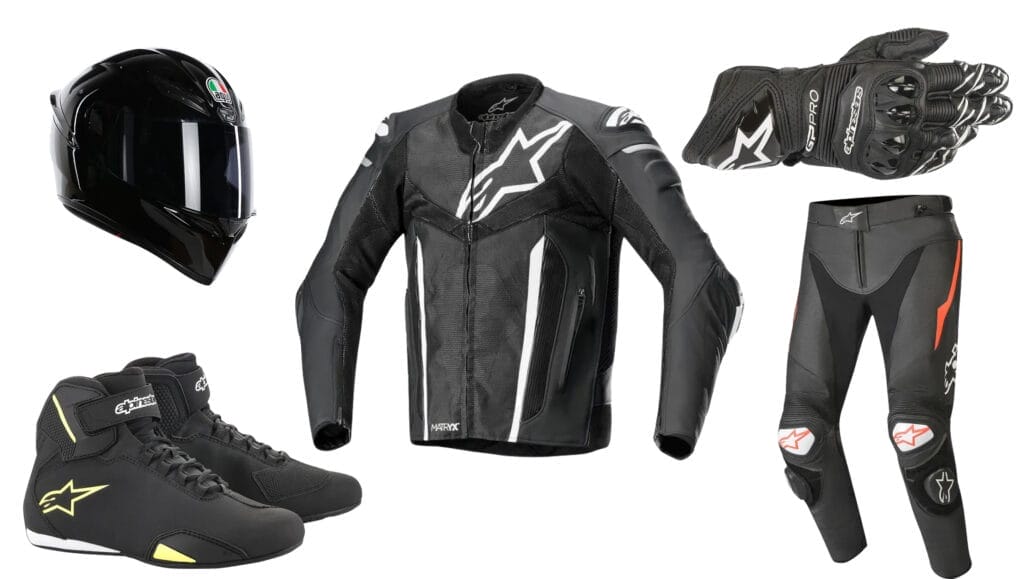
Top Vietnam Motorcycle Routes by Season
To help you make the most of your Vietnam motorcycle tour, here are some of the best routes to consider based on the season:
Best Routes for Dry Season
- Ha Giang Loop: This iconic route in Northern Vietnam offers stunning mountain scenery, ethnic villages, and challenging roads. The dry season provides clear views and safer riding conditions.
- Hoi An to Hue via Hai Van Pass: This scenicvia Hai Van Pass:** The Hai Van Pass is known for its breathtaking coastal views and smooth roads, making it a favorite among motorcyclists. Riding from Hoi An to Hue through this pass during the dry season ensures optimal weather conditions and stunning vistas.
- Phong Nha to Quang Tri: This route takes you through central Vietnam’s historic and natural landmarks, including the Phong Nha-Ke Bang National Park and the former demilitarized zone (DMZ). The dry season offers better conditions for exploring caves and historical sites without the hindrance of rain.
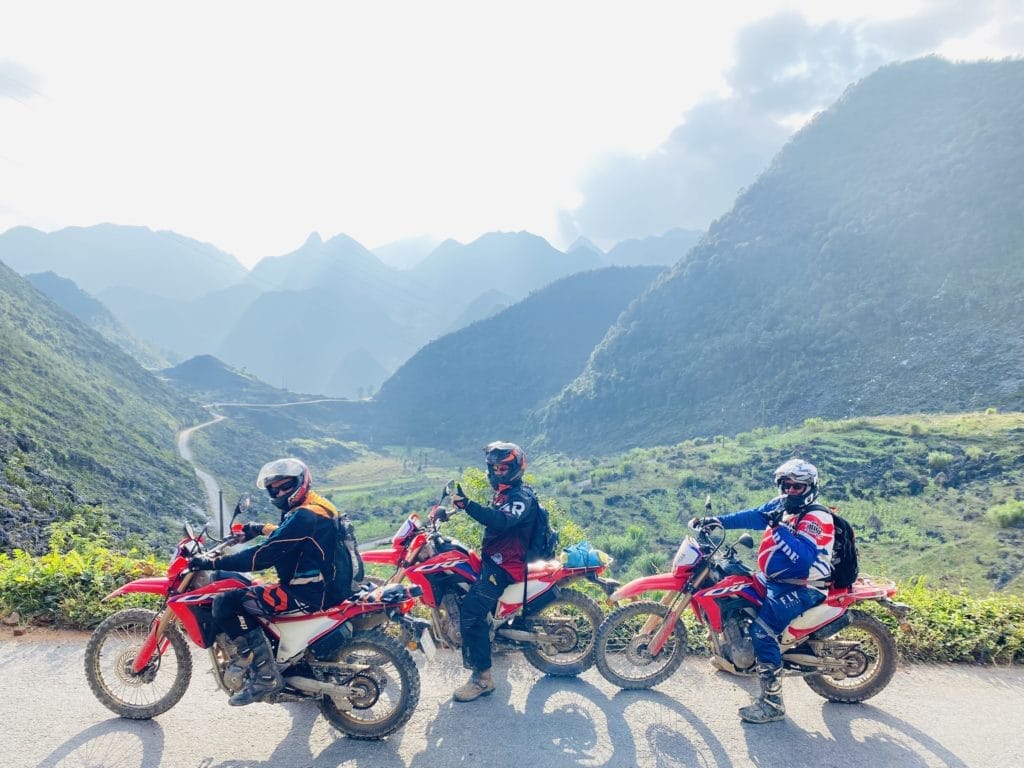
Best Routes for Rainy Season
- Mekong Delta: While the rainy season brings significant rainfall to the Mekong Delta, it also breathes life into its lush landscapes. Riding through the delta’s waterways, rice paddies, and floating markets during this time can be a unique and culturally enriching experience. Just be prepared for occasional rain showers and muddy roads.
- Nha Trang to Mui Ne: Central Vietnam’s coastal region sees less rainfall compared to other areas during the rainy season. This route offers a relatively safer ride with scenic coastal views, sandy beaches, and quaint fishing villages.
Conclusion
Choosing the best time for Vietnam motorcycle tours is essential for ensuring a safe, enjoyable, and memorable experience. By understanding Vietnam’s diverse climate and planning your trip according to regional weather patterns, you can make the most of your motorcycle adventure. Whether you’re exploring the mountainous north, the historic central coast, or the vibrant south, Vietnam offers a wealth of experiences for riders year-round. Remember to prioritize safety, be prepared for changing weather conditions, and embrace the unique beauty of Vietnam on two wheels.
For more information on planning your next motorcycle tour in Vietnam and to book your adventure, visit Vietnam Dirt Bike Tour.
FAQs about Best Time for Vietnam Motorbike Tour
- What is the best month to motorbike in Vietnam?
The best months for Vietnam motorcycle tours vary by region. Generally, March to April and October to November are ideal for Northern Vietnam, January to April for Central Vietnam, and December to February for Southern Vietnam. These months offer mild temperatures and less rainfall, making them perfect for riding.
- Is it safe to ride a motorbike in Vietnam during the rainy season?
Riding a motorbike during the rainy season can be challenging due to slippery roads, heavy rainfall, and reduced visibility. However, with proper precautions, such as wearing waterproof gear, maintaining your bike, and avoiding flooded areas, it is possible to have a safe ride. Always check weather conditions before setting out.
- What are the must-see destinations on a Vietnam motorbike tour?
Vietnam offers numerous must-see destinations for motorbike enthusiasts. Highlights include the Ha Giang Loop, the Hai Van Pass, the Mekong Delta, and the historic Ho Chi Minh Trail. Each region provides unique landscapes, cultural experiences, and varying levels of riding difficulty.
- Do I need a special license to ride a motorbike in Vietnam?
Yes, to ride a motorbike in Vietnam, you must have a valid motorcycle license from your home country and an International Driving Permit (IDP) that covers motorcycles. Ensure your IDP is valid for the duration of your stay, and always carry your documents while riding.
- What kind of motorbike is best for Vietnam tours?
The best type of motorbike for touring Vietnam depends on the terrain and your experience level. For off-road and mountainous regions like Ha Giang or the Ho Chi Minh Trail, a dual-sport or dirt bike is recommended. For smoother, longer rides along coastal or paved routes, a standard or touring bike may be more comfortable.

